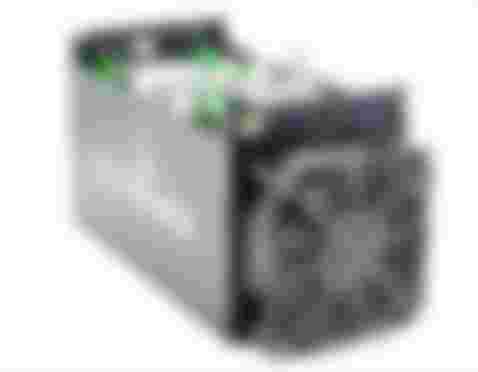
The history of bitcoin mining begins not so long ago in 2009 with the emergence of Bitcoin, that is, with the emergence of blockchain as a technology. The term Proof-of-Work (PoW) is mentioned in Satoshi’s whitepaper. This now historical document explaining the functioning of Bitcoin states that the Proof-of-Work system will be used to validate blocks in the Bitcoin blockchain (transaction processing), and in order for the block to be "confirmed" it is necessary to set aside a certain processor power. In essence, Proof-of-Work provides blockchain security by requiring users to invest a certain amount of work in order to be rewarded, and allows new valid transactions to be added to the block.
In order to send a transaction on the Bitcoin network, it is necessary to pay a certain transaction fee, ie. a fee for processing and confirming the transaction itself. It is this transaction fee that is distributed to miners as an incentive to do their job in the best interest and according to the established rules of the system, ie to use their hardware to confirm (our) online transactions. Transactions with a higher set transaction fee will be confirmed faster online, because that transaction will be more profitable for miners to confirm. In addition to this type of transaction, miners also receive a certain reward for each confirmed block.
The current block reward is 6.25 BTC per confirmed block. This amount is divided among all miners on the network in proportion to their performance, which means that the more miners on the network, the smaller their individual reward because there is more competition. Apart from the fact that the prize decreases with greater competition, the weight of mining also increases. The reward for Bitcoin is reduced to a certain number of mined blocks, and each time the new reward is twice less than the previous one. This is better known in the crypto community as “Bitcoin halving” which takes place approximately every four years, with the aim of halving the inflation of bitcoin itself in order to maintain / increase its value.
The history of bitcoin mining can be divided into several eras that follow the development of the crypto industry as a whole. These eras differ in the hardware used for mining. If you are wondering why it was necessary to change or increase the hardware used - the reason is the increase in the difficulty of digging due to the popularization of cryptocurrencies and the mining of cryptocurrencies over time. Every year, stronger and better hardware was needed to make mining pay off, primarily because the competition (was) increasing, and thus more participants shared the prize, which was consequently smaller. This mainly means that we need stronger hardware in order to, as miners, do as much work as possible on the validation of each block and maximize the reward that follows.
The history of bitcoin mining can generally be divided into several parts: - Processor era (2009 - 2010) - The era of graphics cards (2010 - 2011) - Era FPGA card (2011 - 2013) - The era of ASIC devices (2013 - 2020)
Processor Era (2009 - 2010)
This is the initial era of mining, which is characterized by the use of processors that can be found in any laptop or desktop computer. Satoshi's original idea was for everyone on the network to use their own mining processor. At the beginning of this era, mining was above all a very unusual hobby. Satoshi wanted to better ensure the stability and security of the network. The first bitcoins to be mined were mined using a processor. A similar program was used as the Nokia phone network unlock program due to the similar principle of using the SHA-256 encryption function. Anyone who wanted could mine bitcoin with the help of their laptop or desktop computer.

As more miners connected to the network and it became possible to replace the first bitcoins with fiat money, an interesting problem arose - processors that had better performance at the time could mine more bitcoins, which also meant they were more profitable. More and more miners were using higher performance processors resulting in increased digging weight. The increase in digging weight meant that lower-performance processors became even less cost-effective, meaning they would receive proportionately less bitcoin. People who mined on the Bitcoin network at this time could earn thousands of bitcoins per month, depending on the type and number of processors they used.
Of course, then the price of bitcoin was many times lower than it is now. Despite the low price, certain people saw the potential in mining and started purchasing better and better processors. The goal was to make bitcoin mining as profitable as possible with as little investment as possible. In this way we got the first miners and a fully functional Bitcoin network.
Graphic Card Era (2010 - 2011) As the demand for bitcoin increased, and it reached a price of 10 cents in October 2010, the first miners appeared who used graphics cards (GPUs) for mining instead of processors. Individuals have found that this method of mining is much more efficient than mining with a processor, and the news spread quickly. In a relatively short time, the weight of digging increased so much that it was not worth digging with a processor at all. Computers with a good discrete graphics card that can be used to play video games soon became machines for making a new kind of digital money.

Back then, the option of using two graphics cards for better performance in video games and programs that were very demanding (e.g. video production or 3D modeling) was popular in the computing world, so the necessary infrastructure for mining multiple graphics cards already existed. The more graphics cards in the computer the better the earnings. Mining rigs (computers specializing in mining) that had 4 to 8 graphics cards soon appeared. At the beginning, these were seemingly very amateur assembled machines, but later they took on a special and somewhat standardized shape.
- Era FPGA card (2011 - 2013)
FPGA is short for field-programmable gate array. The specific hardware is designed so that the user can subsequently customize it for a specific task. The feature of these devices is the fast execution of a specific type of task, which can be up to twice as efficient as performing the same task with a graphics card. This potential intrigued the miners of that time and in the middle of 2011 the use of this hardware for the needs of mining began.

Since FPGA devices are not as easy to use as graphics cards and processors, there were not many people who mined with these devices in the beginning. As mining software using FPGA devices became more available, so did the number of people earning their bitcoins in this way. Of course, the high efficiency of these devices and the fact that they give twice better results than graphics cards only further contributed to the increase in the difficulty of digging bitcoin, but FPGA devices did not lead to GPU mining becoming a history of bitcoin mining. This was caused by ASIC devices that entered the scene in 2013.
The era of ASIC devices (2013 - 2020) ASIC devices first appeared in 2013 and have completely taken over the mining scene. Namely, ASIC is abbreviated from application-specific integrated circuit, which means that ASIC devices are specially designed to solve one type of task. The disadvantage of this approach is that ASIC devices cannot be used for anything other than mining with the help of a certain algorithm. The advantages of these devices are many times better performance and very easy installation. It was not necessary to understand the hardware to use an ASIC device. The miners would just order these machines and turn them on. Suddenly, everyone could mine on the Bitcoin network with minimal effort. This has resulted in an increase in the weight of mining to the point that all of the aforementioned mining methods have become (almost) completely unprofitable for bitcoin mining.

The history of bitcoin mining remembers several companies that were engaged in the production of ASIC devices, among which is today's giant Bitmain. The race for the best ASIC device led to the closure of a large number of companies because only companies with a competent product could survive in the market. The more a particular model was produced, the lower the cost of its production, so that smaller firms did not have much chance of surviving as serious competitors in offering the device to miners.
The first ASICs were in the form of USB devices. They were fanless, noiseless and with minimal power consumption. The miners soon set out to build the first mining farms with the help of these small devices - several dozen of them connected to the same computer with the help of USB hubs gave maximum performance. With the increasing difficulty of digging, better and better ASICs took their places in miners ’garages and warehouses while old ones were sold at much lower prices.
ASIC devices evolved as the need for increasingly powerful machines grew. This era continues, and ASIC devices today provide several thousand times better performance than the first processors used in 2009. New generations of ASICs are always very cost-effective, but one should also take into account the very high price of new ASIC devices as well as the fact that new models come out every few months which reduces the profitability of old models.







Sjajan članak! Bravo!